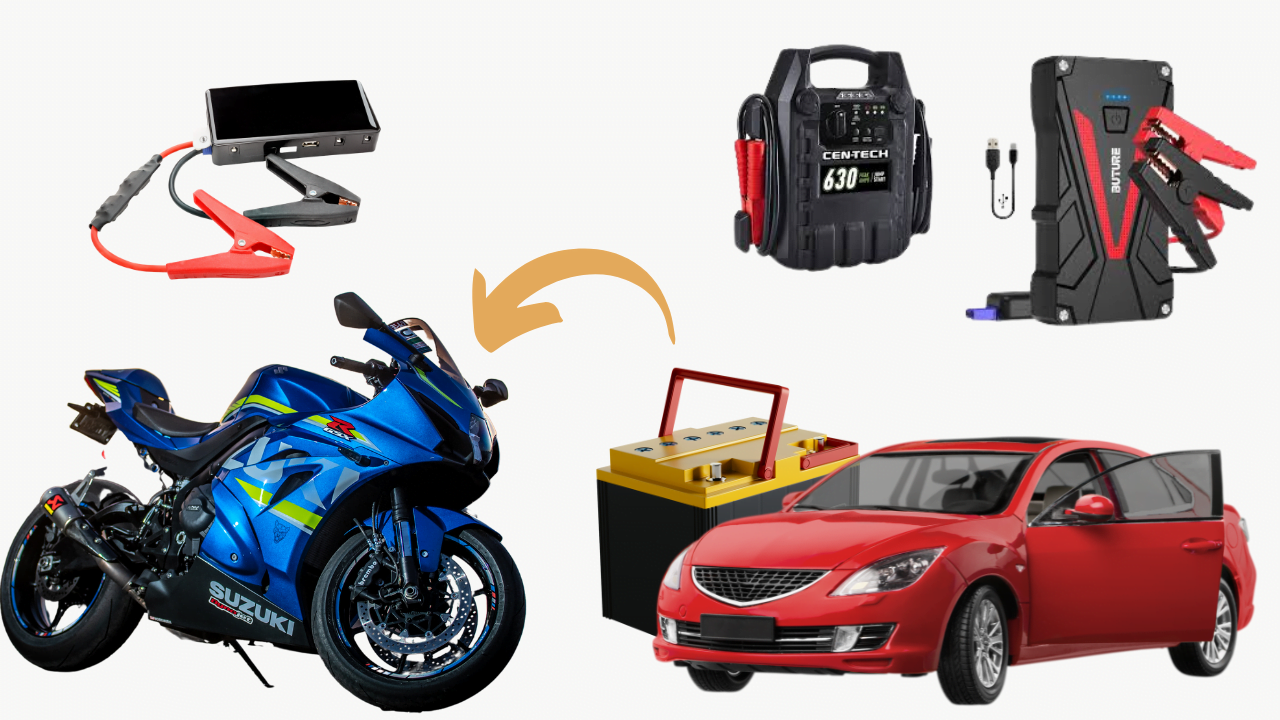Do you have any idea how can you jump start a motorcycle with a car? We’ve all been there – you’re ready to hit the road, turn the key, press the starter button, and… nothing. Just that dreaded click. Your heart sinks because now you’re stranded, and all plans are on hold. Need help jump-starting your motorcycle? Check out our guide on how to jump-start a motorcycle battery.
As a rider, I’ve faced this more times than I care to admit. Dead batteries are a common problem, but they don’t have to ruin your day. The good news? With a bit of know-how, you can quickly get your bike back on track.
Quick look:
Yes, you can jump-start a motorcycle with a car, but only if both the motorcycle and car have 12V batteries. The process is similar to jump-starting another car—connect the red (positive) and black (negative) cables carefully.
Make sure the car is turned off to avoid overloading the motorcycle’s electrical system. While it works in a pinch, using a portable jump starter is a safer and more convenient option for motorcycles.
Key Considerations Before Jump-Starting
Before you jump-start a motorcycle, there are a few things you need to check. Jump-starting isn’t always a quick fix, and if done wrong, it can cause more harm than good. Keep your jump starter ready by learning how to charge a portable jump starter.
First, you need to know the voltage of your motorcycle’s battery. Most modern bikes run on a 12V system, which is the same as a car. If that’s the case, you’re in luck. You can safely jump-start your motorcycle using a car. But if your bike has a 6V battery, don’t even consider using a car. A 12V charge will fry the electronics on a 6V bike.
Here are the key things to consider:
- Voltage Compatibility: Always check that both batteries are 12V. Using a car to jump-start a 6V motorcycle can cause serious damage.
- Battery Condition: If the battery is completely dead, even jump-starting may not help. You might need a full recharge or even a replacement.
- Avoid Short Circuits: Be cautious when handling the jumper cables. Never let the positive and negative terminals touch. A short circuit can damage your bike and create a dangerous situation.
- Safe Connection Points: Always connect the black (negative) cable to a metal part of the motorcycle frame. This prevents sparks near the battery, which could ignite flammable gases.
Step-by-Step Guide on How Can You Jump Start A Motorcycle With A Car
I’ve been in this situation more times than I’d like to admit. You’re out for a ride, everything’s going great, and then suddenly… the bike won’t start. The battery’s dead, and you’re stuck. But don’t panic—if you’ve got access to a car, you can use it to jump-start your motorcycle. Here’s how to do it the right way.
1. Get Prepared
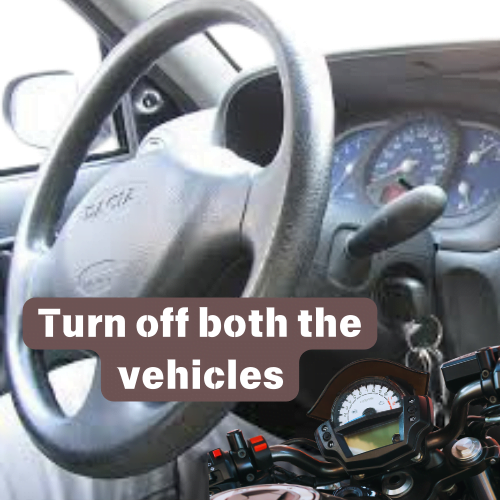
First, turn off both vehicles. You don’t want any unnecessary sparks or shocks. Make sure the car is in park and your motorcycle is in neutral. Trust me, safety comes first, and these little steps can make all the difference.
2. Hooking Up the Jumper Cables

Now, grab your jumper cables. Start by connecting the red (positive) cable to the positive terminal of the car’s battery. Then, connect the other end of the red cable to the positive terminal on your bike’s battery. Easy, right?
Next, take the black (negative) cable and connect it to the negative terminal on the car’s battery. Here’s a crucial part: instead of connecting the other end to your motorcycle battery, attach it to a metal part of the bike’s frame. This reduces the risk of sparks near the battery—something you want to avoid.
3. Start the Car and Charge the Motorcycle
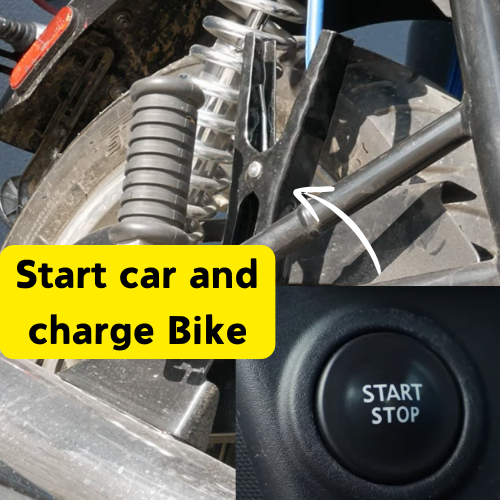
Now, fire up the car and let it run for a few minutes. This will send some much-needed juice to your motorcycle’s battery. Be patient here. It might take a couple of minutes for the battery to have enough power to start the bike.
4. Start Your Motorcycle
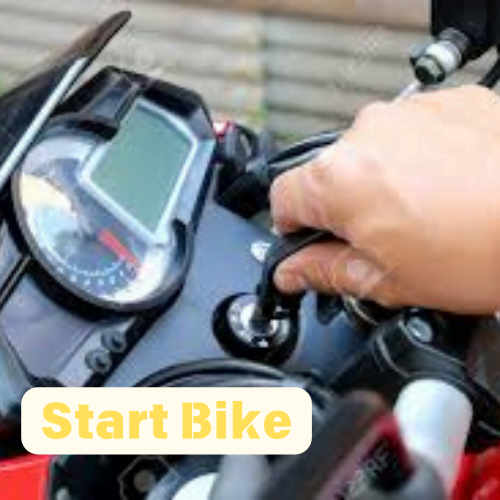
Once the car’s been running for a bit, try starting your motorcycle. If it roars to life, great! Let it run for a few minutes to allow the alternator to keep charging the battery. If the bike doesn’t start right away, don’t worry. Wait a couple more minutes and try again.
5. Disconnect the Cables Safely
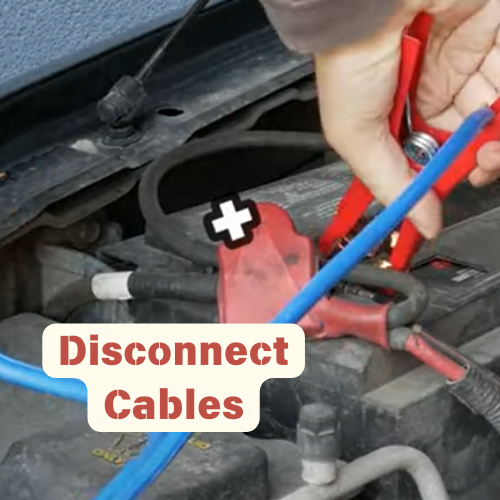
Once your motorcycle is running, it’s time to disconnect the cables. Here’s the rule: do it in the reverse order you connected them. Start by removing the black cable from the motorcycle’s frame, then from the car. After that, disconnect the red cable from the bike and finally from the car.
And there you have it! You’re back on the road.
Just a quick note: a car battery is much more powerful than a motorcycle battery, so don’t overdo it. You only need a few minutes to charge the bike’s battery. After that, it’s all about getting your bike running on its own power. Jump-starting alone? Follow our complete guide to jump-start a car by yourself.
Using a Portable Jump Starter: A Safer Alternative
When I’m out on the road, the last thing I want is to be stranded because of a dead battery. That’s why I always carry a portable jumpstarter with me. It’s one of those items you don’t think you need until you absolutely do. Trust me—once you’ve used one, you’ll wonder how you ever rode without it.
Using a portable jump starter is not only safer but also incredibly convenient. Unlike jump-starting with a car, you don’t have to worry about matching voltages or damaging your motorcycle’s delicate electrical system. Most jump starters are designed specifically for motorcycles, meaning they deliver the right amount of power without the risk of frying your battery.
Here’s how easy it is to use: pull out the jump starter from your saddlebag, connect the red clip to the positive terminal, the black clip to the negative, and you’re ready to go. It’s that simple. No need for another vehicle or worrying about getting the cables right. You just turn on the device, fire up your bike, and within minutes, you’re back on the road.
The best part? Many portable jump starters come with extra features. Mine doubles as a phone charger and even has a built-in flashlight—perfect for those late-night rides when things go wrong. I’ve used mine on everything from my GoPro to my camping lights. Keep your jump starter ready by learning how to charge a portable jump starter.
Carrying a portable jump starter gives me peace of mind. It’s one of those small investments that can save you from a huge headache. Plus, it ensures I’m never stuck waiting around for someone to give me a jump. It’s just me, my bike, and the open road again.
Preventive Measures and Maintenance Tips
Over the years, I’ve learned that prevention is key when it comes to motorcycle batteries. No one wants to be stranded on the side of the road with a dead battery. Here are a few steps you can take to avoid that situation:
- Regular Battery Maintenance:
I check my battery every few weeks, especially during periods when I’m not riding much. If your bike sits idle, invest in a trickle charger. This will keep your battery charged without overloading it. - Avoid Accidental Battery Drain:
It’s easy to forget to unplug things like phone chargers or heated gear. Double-check that everything is turned off when you park your bike. A quick glance can prevent the headache of a dead battery the next day. - Watch for Warning Signs:
There are times when a jump start isn’t enough. If your battery is old or your bike’s charging system isn’t working properly, you’ll notice slow cranking, dim lights, or a battery that won’t stay charged. These are signs that you’ll need to either replace the battery or get the charging system checked. - Use a Trickle Charger:
This simple device can extend the life of your battery by maintaining its charge during long periods of inactivity. Just hook it up while your bike is parked. - Be Prepared for Emergencies:
Carry a portable jump starter. It’s an easy way to get back on the road without relying on someone else. Plus, it’s small enough to fit in your gear bag.
Need something powerful? Check out our list of the 6 best commercial jump starters in 2024.
Safety Guide for Jump-Starting a Motorcycle with a Car
| Do’s:Check Voltage: Ensure both are 12V.Turn Off Car: Before connecting cables.Connect Positives First: Red cables first.Ground on Metal: Black to bike frame.Disconnect Properly: Remove black cables first. | Don’ts:Don’t Mismatch Voltages: No 6V bike to 12V car.Don’t Touch Cables Together: Avoid short circuits.Don’t Skip Checks: Verify connections before starting.Don’t Rush: Let the car run first.Don’t Ignore Battery Maintenance: Regularly check the battery. |
So, can you jump-start a motorcycle with a car? Yes, you can, but only if both batteries are 12V. It’s a helpful trick when you’re in a pinch, but it comes with risks. You need to be careful with the connections and make sure to follow the proper steps to avoid damaging your motorcycle’s battery or electrical system.
I recommend using a portable jump starter whenever possible—it’s safer and more convenient. With the right precautions, either method can get your bike running again and back on the road in no time.
